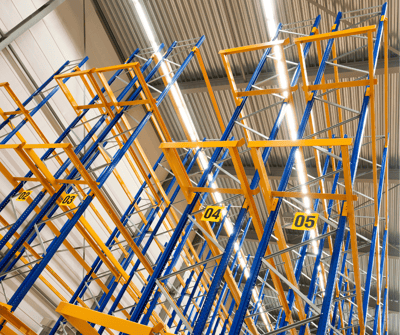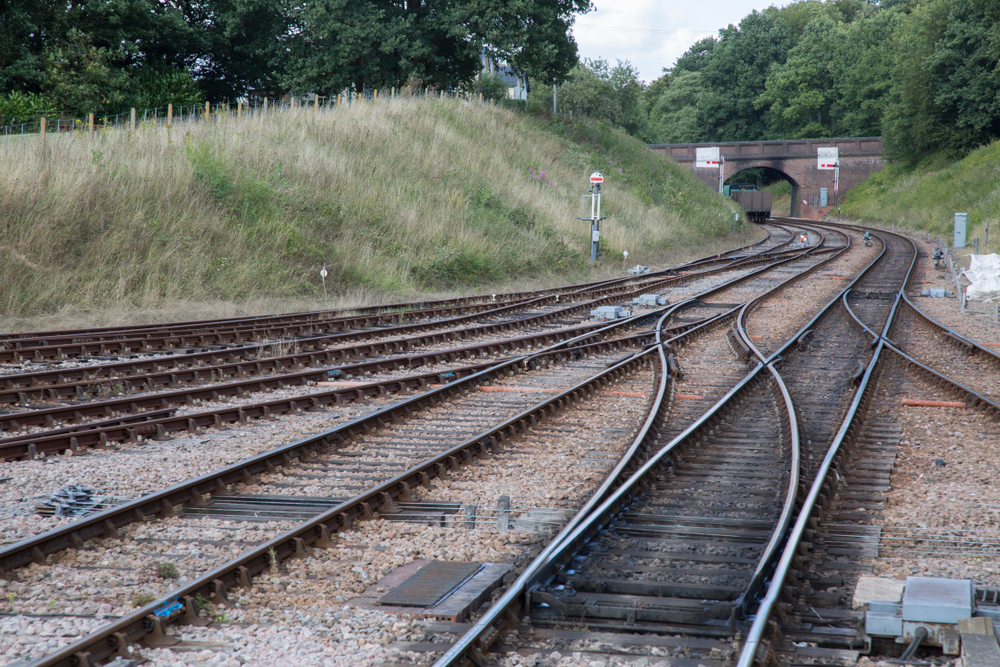On Friday, 16 September, supply chain managers across the US breathed a collective sigh of relief. Labor Secretary Marty Walsh announced that freight train unions and rail carriers had reached an agreement. There’d be no strike.
Before we all get back to work, it’s worth dwelling on what might have happened.
What would have happened if the railways shut down?
“With product availability, inflation and cost challenges continuing to affect American consumers, the supply chains cannot afford another crisis in the form of a freight rail strike.”
This was the US Consumer Brands Association’s bleak situational assessment in the hours leading up to the deadline for negotiations. It’s easy to dismiss doom and gloom prognostications like these as just “more of the same.” The US has been battered by supply chain uncertainties for a few years now. You get to a point where dire predictions lose their sting.
But consider the facts at hand:
- A nationwide shutdown of our rail network would have cost the US economy an estimated $2 billion per day, OceanAir reports.
- Rail accounts for 28 percent of US freight transport; it’s second only to trucking, according to 2020 data released by the US Department of Transportation.
- Around 40% of rail freight supports international trade, the Association of American Railroads estimates in its September 2022 analysis of the impacts of a rail shutdown.
- An estimated 467,000 additional long-haul trucks would be needed to accommodate freight currently moved by rail, FreightWaves reports.
On the ground, a rail strike would likely have caused a string of factory closures as crucial raw materials failed to arrive in time. Consumer and commercial goods would rapidly disappear from shelves, and prices would spike. We’d see the phenomenon we’ve observed so many times since Covid-19 began dominating the news cycle. Shockwaves of secondary disruptions would resonate through production lines and distribution channels.
After that? Even a relatively brief rail strike would likely produce a slow-moving fallout cloud of logistics volatility. Industries across the board would be plagued by erratic carriers, higher shipment prices, and heightened unpredictability. It’d spread across the US map causing supply chain havoc in its wake.
An eleventh-hour tentative agreement was reached on September 19. We dodged a Silver Bullet… for now.
But while rail is full steam ahead for the time being, some unions have yet to ratify the agreement. One rail activist quoted in The Washington Times characterized the average US rail worker’s attitude as one of “anger, confusion, and hostility.” Keep your hands inside the moving vehicle. There may be treacherous bends ahead.
Don’t let disruptions derail your supply chain
 The obvious and critical question is, can you position your company’s supply chain to be less vulnerable to a rail strike and similar freight disruptors? Absolutely, you can. IL2000 specializes in building solutions for the most intractable problems supply chains face in these crazy, mixed-up times. So let’s assume the worst, and that worker discontent reignites, the unions vote to strike, and US rail networks are paralyzed from coast to coast.
The obvious and critical question is, can you position your company’s supply chain to be less vulnerable to a rail strike and similar freight disruptors? Absolutely, you can. IL2000 specializes in building solutions for the most intractable problems supply chains face in these crazy, mixed-up times. So let’s assume the worst, and that worker discontent reignites, the unions vote to strike, and US rail networks are paralyzed from coast to coast.
We’ve already spoken about the horrendous cost, upward of $2 billion per day. But let’s talk about your business. Here’s how a 3PL’s expertise can help.
Instant response
The first order of business is today. Now. How do we keep your freight moving as best we can when carriers are inundated with emergency shipment requests?
Our team will get on the phone with you to prioritize your supply chain. Which freight is a priority? When does it need to go out? How can we manage your client’s expectations? What list of activities must happen, and in what order, to minimize the fallout for your business?
With a plan locked in, we’ll hit the phones, scrambling to find viable alternatives. Bear in mind, this rapid response mobilization is far from new for us! Read about how we helped one client keep their freight moving after Hurricane Ida.
Short-term solutions
 There’s the sudden calamity to deal with, then there’s the initial response. In the weeks following a major disruption like this you’ll be buffeted by a “swirl” of logistics volatility. Shippers and carriers will react in real-time to unfolding events and commensurate fluctuations in the freight market.
There’s the sudden calamity to deal with, then there’s the initial response. In the weeks following a major disruption like this you’ll be buffeted by a “swirl” of logistics volatility. Shippers and carriers will react in real-time to unfolding events and commensurate fluctuations in the freight market.
You may suddenly find your normally reliable trucking carrier stops answering your phone calls. You may encounter sudden delays in accessing specialized transport to move heavy or fragile items. If you’re a manufacturer of perishable products, this short-term scramble for solutions will tax decision-making on a daily, possibly even an hourly, basis. What’ll that look like? In the final days of rail union negotiations, The American Bakers Association warned of a “devastating ripple effect” creating shortages of materials and ingredients for all food manufacturers.
Having access to an expert team of transportation specialists will give you the agility you need to make quick, short-term course corrections to navigate that swirl. Read about how we helped one client greatly accelerate their supply chain responsiveness.
Mid-term solutions
By now, the strike may be resolved, but the runaway domino effect will have its own momentum. Disruption after a rail strike will likely resonate across the freight market for months. In time though, a keen observer will begin to see through the chaos to identify persistent trends.
Now’s the time to craft smart mid-term solutions, to take a step back and look at how this new reality looks set to impact your supply chain further down the line.
You’ll likely need to make lasting adjustments to your shipping lanes
If rail was part of your supply chain picture, you may need to make tough decisions about alternative shipping lanes. This will likely be the beginning of a string of distribution decisions as companies competing for the same carriers react to one another.
To better position yourself for reliable carriers, you may have to consolidate your shipments or experiment with new transport modalities. Here’s how we helped one client optimize their freight shipment strategy.
Your shipping priorities may shift
 There’ll almost certainly be new logistics priorities to consider as consumers and businesses downstream from you place new supply chain demands on your business. Do you need your shipments to get there faster? Just-in-time? More reliably or efficiently? To different locations?
There’ll almost certainly be new logistics priorities to consider as consumers and businesses downstream from you place new supply chain demands on your business. Do you need your shipments to get there faster? Just-in-time? More reliably or efficiently? To different locations?
You’ll need to be able to respond to those demands quickly, and in a way that positions you to outperform your competition.
Your process of finding these answers will be smoothed out by experts with decades of experience in every facet of logistics — from business intelligence to warehouse management, carrier selection and modality of transport. Here are some examples of how we’ve helped clients change how they ship based on emerging priorities.
You may need to build systems for rapid response.
If there’s one truth of supply chain management over the past few years, it’s that you don’t know what you don’t know. You can’t foresee every change.
We can help you build customized BI dashboards to give you greater visibility across your supply chain. And if something unexpected happens? Our rapid response team can be on the case and mobilizing a response in under 15 minutes. Check out this case study to learn more about the blazing efficiency of customized BI and rapid response alerts.
Long-term solutions
 With the rail strike behind you now, it’s time to shift your gaze to long-term resilience — because we all know the rail strike won’t be the last joker up the devil’s sleeve.
With the rail strike behind you now, it’s time to shift your gaze to long-term resilience — because we all know the rail strike won’t be the last joker up the devil’s sleeve.
Software isn’t the answer. Fixed transportation management platforms may make some parts of the logistics process easier, but no software package in isolation can make your team smarter.
As you look for a long-term response to whatever supply chain reality comes next, it’s skilled experts that’ll give you the supply chain resilience you need. An experienced 3PL will help you prepare for the supply chain issues you’ll be dealing with next month, next year. Read about how our far-seeing perspective on supply chain management.
Be ready for the unexpected
Whatever supply chain disruption comes along next, deal with it head-on. IL2000 offers the tools, expertise, and insight you need to future-proof your supply chain against the unknown.

